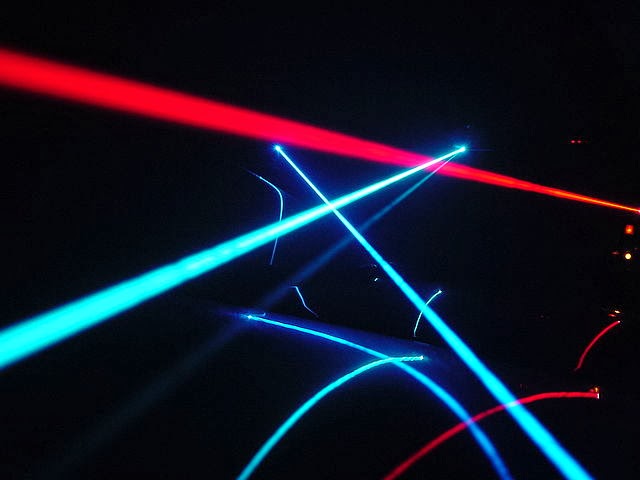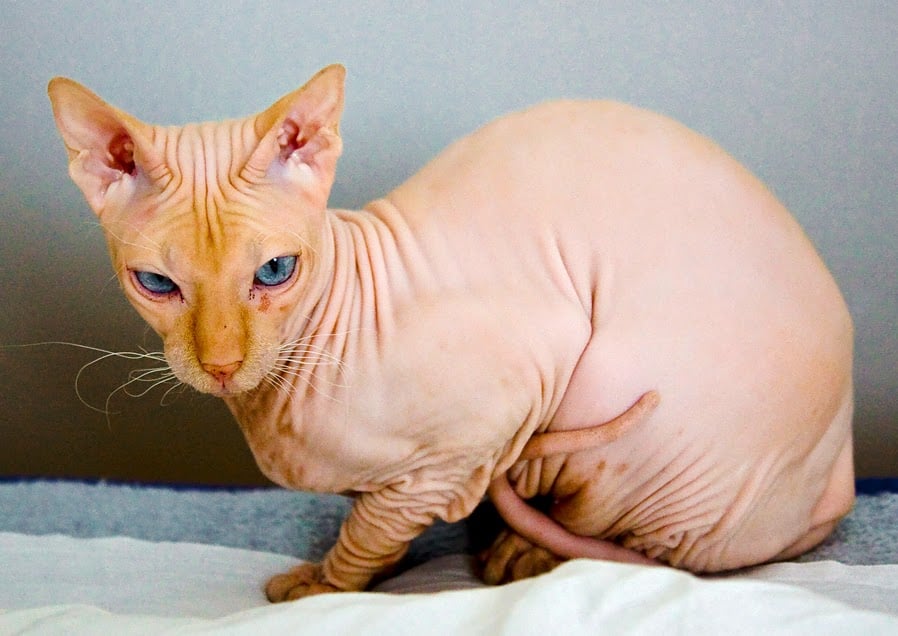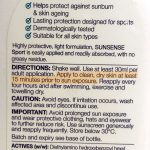Like many other women my age, I’ve been removing my body hair weekly for about 10 years, and I’m getting sick enough of it to start considering painful (both physically and financially) options.
The most popular one is laser hair removal, and its cousin IPL hair removal – you can always find an active voucher deal for these! Laser and IPL hair removal aren’t the same, but they work on the same principle.
How does it work?
As you’ll know if you’ve ever worn the wrong colour to the beach (e.g. in my gothy teenage years), dark colours absorb light, which turns into heat. Both laser and IPL use light to heat up hair follicles (around 2-5 mm deep in the skin) to the point where they become damaged and either stop producing hair, or produce hair less efficiently, leading to either no hair growth, or growth of lighter, finer hair. The difference between laser and IPL is simply in the type of light they use – laser uses one wavelength of light only, whereas IPL uses a range.
When does it work best?
Hair needs colour (melanin) to absorb enough light to heat up and damage the hair follicle. So it makes sense that the more melanin you have in there, the better laser/IPL hair removal is going to work. It simply doesn’t work on light hair, and works best on dark brown/black.
However, skin also contains melanin, with dark skin containing more. The last thing you want is the melanin in your skin absorbing the light and turning it into heat – that’s the perfect recipe for a burn. Even worse, the pigment-producing bits in your skin (melanosomes) might become damaged, causing permanent uneven pigmentation! So the ideal combination for laser hair removal is dark hair and pale skin. There are now some laser treatments which can successfully heat up and damage hair follicles without significantly heating up the skin, in particular the Nd:YAG laser.
 |
| Jeff Keyzer |
Limitations
This is also complicated by the fact that only hair at a certain stage of the growth cycle will be affected by the heat. The percentage of hair that’s able to be damaged by heat varies depending on the area of the body, but for most places that require hair removal, it’s around 25% (one quarter) on the body and 67% (two thirds) on the face – in other words, you can’t zap all the hair in a single session. Damaging all the hair will take a bare minimum of 4 well-spaced treatment sessions for the body, and 2 for the face.
Annoyingly, damaged hair follicles are also very good at repairing themselves over time. This means that you’ll have to go back for maintenance treatments at least once a year.
Safety
Of course, using something as cool as lasers on your skin involves some safety issues. Both laser and IPL treatment can cause burns, scarring and pigmentation changes, which can be permanent. Regulation of who can use these machines and what settings can be used varies a lot geographically, and with the invention of cheaper machines, there are many IPL and laser treatment clinics operated by undertrained staff. As with any other treatment – read reviews of the place, don’t just go for the cheapest option, and if it feels rushed or dodgy, abort mission!
References
TS Alster, H Bryan & CM Williams, Long-pulsed Nd:YAG laser-assisted hair removal in pigmented skin: a clinical and histological evaluation, Arch Dermatol 2001, 137, 885.







Apparently IPL is very ineffective for hair removal, and requires more treatments.
I had a vague idea of how laser and IPL removal works, but this was heaps interesting to read.
I did laser removal about two years ago; being pale with dark hair I was the perfect candidate…but another thing that needs to be considered is the age of the candidate. Even though I met the necessary requirements for the laser to work, I am still young enough that my hormones might make the hair follicles grow back anyway (or something?) You need so many treatments over a spaced amount of time to make sure the entire hair cycle is destroyed. Or something like that?
And, although today I get a lot less hair than I did (I shave my underarms about once every 2-3 weeks to remove stubble) there is patches where it didn’t work so well, so I will have to go back and re-do it.
But I highly recommend it. It’s worth the money just to not have to deal with shaving / waxing. 🙂
xx
IPL is generally a bit less targeted than lasers from what I’ve read, but there’s a lot of variation between different types of lasers and pulse programs, and the studies on hair removal with both methods are pretty poor in quality. I’m looking into it at the moment – my leg hair is pretty sparse, so I would only do armpit and bikini, but I’m afraid of the pain and I don’t really mind shaving. It’s a hard choice!
I’ve just started treatments. The original intent was to take care of an excessively low hairline. I wear my hair very short and I have to have parts of the back of my neck trimmed. I also have my upper lip done. And just started having my arms are done (I’m of French ancestry. We are a hairy people). I am thrilled with the results. After only one treatment a third of my hairline was gone. As for the pain, it depends on how many follicles. The back of the neck hurts. Face and arms where the hair isn’t as thick it doesn’t hurt at all. I find it even a little relaxing. None of it hurts as badly as waxing. It can be expensive but considering that I’ve paid for electrolysis and regular waxing for years, overall it’s a bargain. See if you can’t find someone who charges by time regardless of the body area. And of course that they are properly licensed.
I never trust it, thanks for news!
My latest post–> Tartan Love Moschino
It worked really well on me but I’ve been too lazy to go back =[ usually it lasts about 6 weeks on me before I have to go back for another round but it’s been two years since my last treatment >.<
Great post! I’ve been thinking about getting the laser for my arms and wasn’t sure what the difference between each was.
This laser product claims to work for all skin types- http://mepower.ca/
this was really interesting! I’m glad i have dark hair and light skin, this might be an interesting option!
To learn more about laser hair removal in gurgaon and diode hair removal
Do you want to remove your unwanted hair? If yes then it is a high time to visit diode laser hair removal delhi and laser hair removal surgery.
Laser hair removal – is the best method get rid unwanted hair.
___________________________
Epilation au laser
I just had my second IPL session last week. So far I’m happy with the results. Hopefully it stays that way!